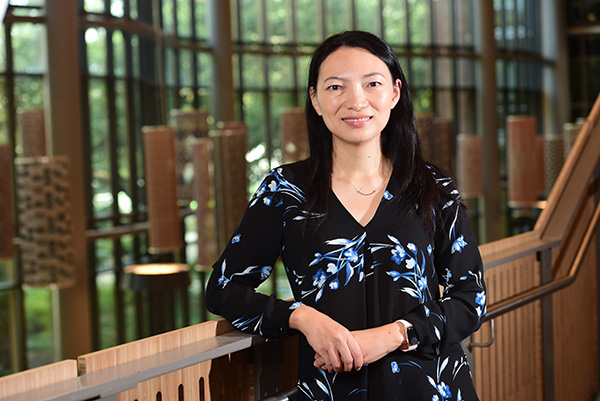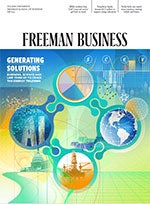
In a forthcoming paper, Yang Pan, assistant professor of management science, uses counterfactual analysis to get a clearer picture of Uber’s effect on public transportation.
Ride-hailing services such as Uber and Lyft have revolutionized the transportation industry, but their impact on public transit remains unclear. On the one hand, there’s the fear that ride hailing siphons customers away from legacy transportation systems like buses and subways, threatening their continued viability. On the other hand, Uber claims it actually increases access to mass transportation by partnering with transportation authorities to provide discounted travel to transit hubs.
Thus far, the debate has been inconclusive. Uber doesn’t share its ridership statistics, and studies that focus solely on changes in mass transit usage don’t always establish causality. In a forthcoming paper, a researcher from the A. B. Freeman School of Business takes a new approach, using data and computational modeling to establish a clearer picture of Uber’s impact on mass transit.
“As a management science professor, I’m interested in new technologies, especially disruptive technologies, and how they can change society,” says Yang Pan, assistant professor of management science and co-author of the paper. “In the past I’ve looked at technology giants and startups across different high tech industries, but this is my first study to look into a specific example of disruptive technology.”
Previously, most researchers have attempted to quantify the impact of ride-hailing services using the so-called difference-in-differences (DID) method, which compares public transportation ridership before and after the entry of a ride-hailing service. While that approach yields some insights, it can fail to establish causality due to the presence of external confounding factors, unobserved variables that can influence the observed effect. For this study, Pan opted to complement the DID technique with counterfactual analysis, which uses a computational model to generate a prediction of the number of public transportation rides in markets that Uber is currently active in but assuming it had not entered them. These counterfactual predictions are then combined with the actual observed results to generate a more accurate estimate.
“[Counterfactual estimators] provide more reliable causal estimates than the conventional DID model with two-way fixed effects when unobserved time-varying confounders might exist,” Pan says.
For the study, Pan and her co-author, Liangfei Qiu, analyzed transportation data for 305 urban areas between January 2006 and December 2017, including 77 areas that Uber entered during the period. Their final sample comprised more than 35,000 urban area month observations. Using the counterfactual estimator approach, the authors found that bus passenger trips dropped between 7.3% and 8% when Uber entered an area. While these estimates are more conservative than the 8.8% decline found using the DID method, they still point to a significant drop in public transportation usage following the entry of Uber. “In general, Uber has a negative effect on the number of bus rides,” Pan says. “After Uber enters, the number of bus rides declines.”
The drop-off in public transportation usage is concerning, but Pan notes it’s important to assess the impact of ride-hailing services in a holistic way. While decreasing mass transit usage could threaten the continued viability of those systems, she says Uber also enables unemployed or underemployed individuals to use their assets to generate additional income.
“On a society level, Uber provides job opportunities and a stable, more flexible way for people to earn income, so that’s a good thing for overall social welfare,” she says. “It’s hard to simply classify Uber as a good thing or a bad thing. Rather, I think regulators and planners need to take Uber’s overall effects into account.”
For example, Pan says that while she and her co-author found a strong correlation between poverty rate and Uber adoption, suggesting that residents are taking advantage of Uber to generate additional income, they did not find that correlation in areas with a large number of singlefemale-led households.
“My guess is a single mother might be less able to take this opportunity to partner with Uber, even if it’s a way to increase the family income, simply due to her overloaded burden,” Pan says.
Pan says she hopes the study encourages regulators and social workers to provide more channels to improve the social welfare of minority groups, such as singlefemale-headed households. She also hopes the study provides data and information that policy makers can use to better manage and plan public transportation in their communities.
“In the future, Uber and public transportation are going to need to coexist,” she says. “That’s what policy makers and regulators need to be aware of and take into consideration.” FB
Pan’s paper, “How Ride-Sharing Is Shaping Public Transit Systems: A Counterfactual Estimator Analysis,” co-authored with Liangfei Qiu, is forthcoming in Production and Operations Management.

